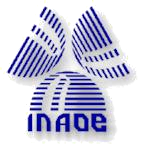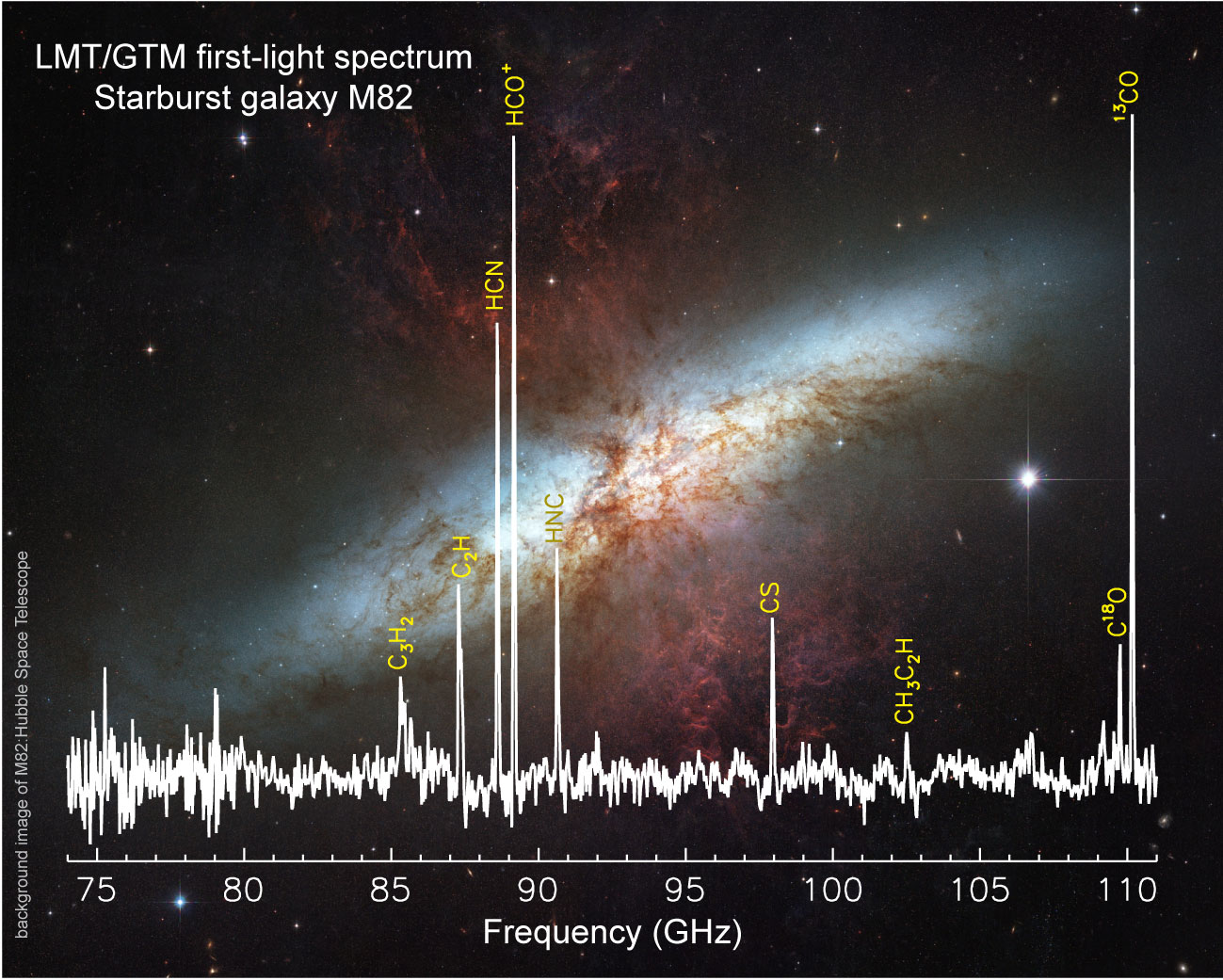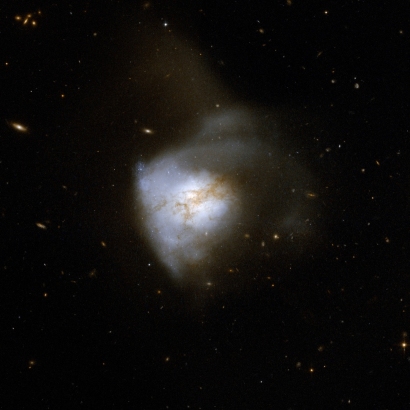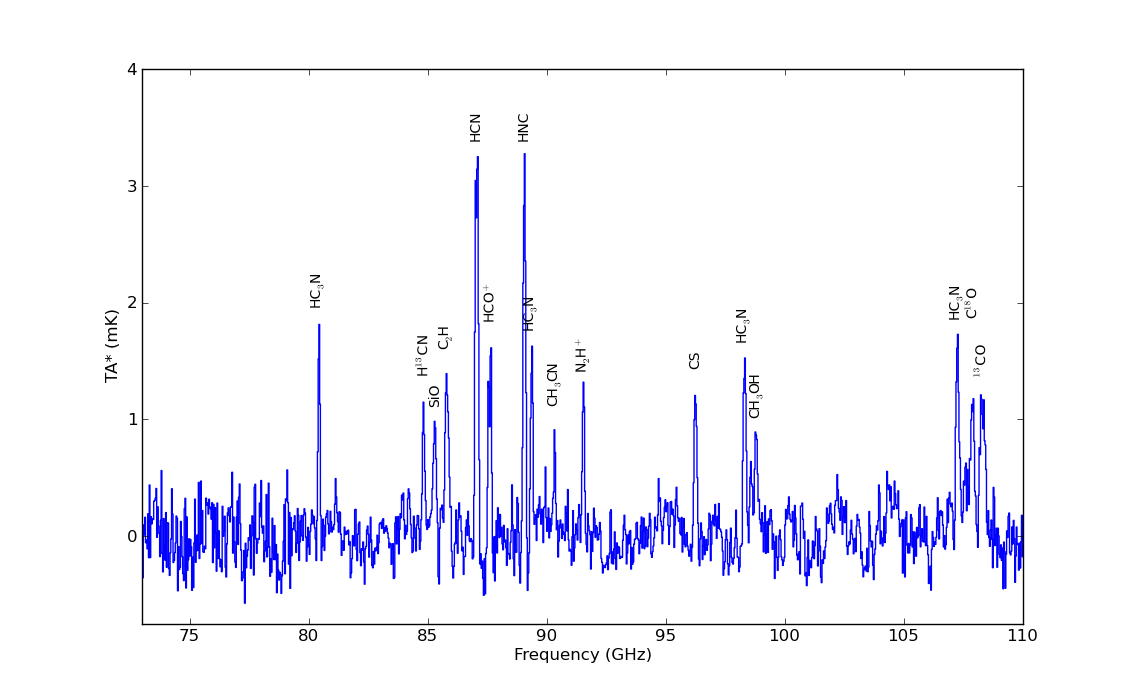Successful First Light Observations of Galaxies Near and Far
June 17, 2011
Astronomers at the University of Massachusetts
Amherst and Mexico's Instituto Nacional de Astrofisica, Optica y
Electronica announced today that the LMT has collected its first light
spectrum from a distant galaxy. The data were taken using the Redshift
Search Receiver, which covers a full 38 GHz of frequency in a single
observation and allows many molecular lines to be observed
simultaneously. Additional descriptions of this instrument is found here.
The related press releases and popular articles can be found as:
In addition to the successful observations of the nearby starburst
galaxy M82, a wide range of engineering and scientific observations have
been carried out as part of the commissioning observation campaign.
Three additional examples spanning a wide range of luminosity and
redshifts are shown here. Numerous molecular transitions are present in
these spectra, but they are individually identified only in the nearest
object Arp220.
Arp220
Arp220 is a local (z=0.018) ultraluminous infrared galaxy forming stars
at hundreds of solar masses per year as a result of mergers of two large
spiral galaxies. A Hubble Space Telescope color image shown on the
left panel (credit: HST/NASA) nicely demonstrates its merger origin.
The full RSR spectrum of Arp 220 covering the frequency range between 73
to 110 GHz is shown on the right panel, and many of the bright lines
are identified. These lines are fully spectrally resolved by the 31 MHz
resolution of the RSR.
z=2.327 SMG J2135-0102 ("the Cosmic Eyelash")
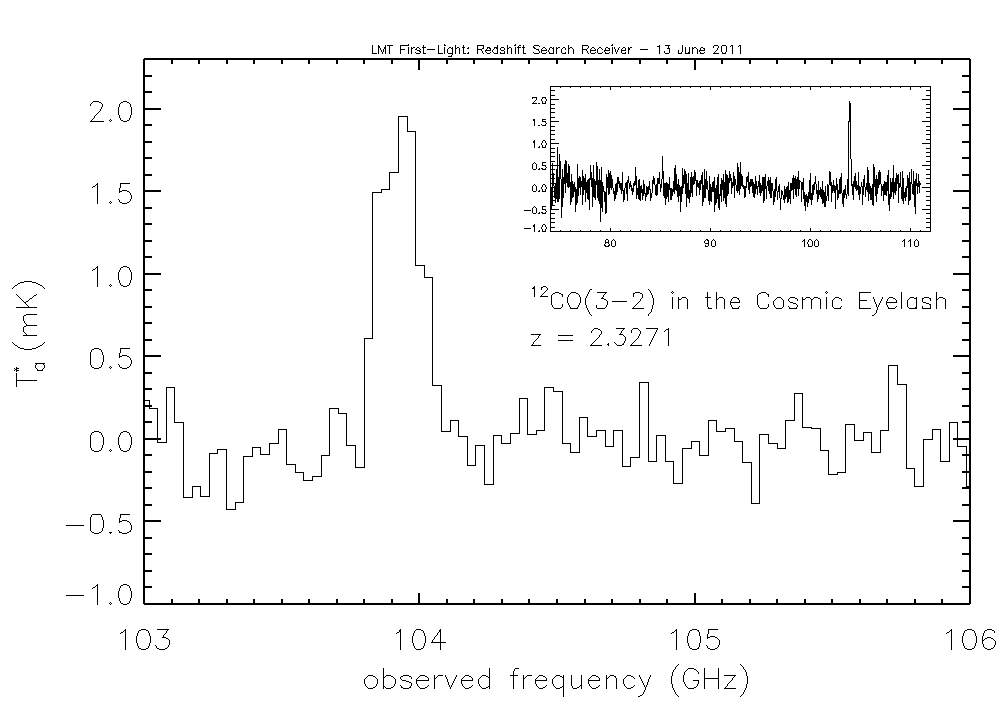
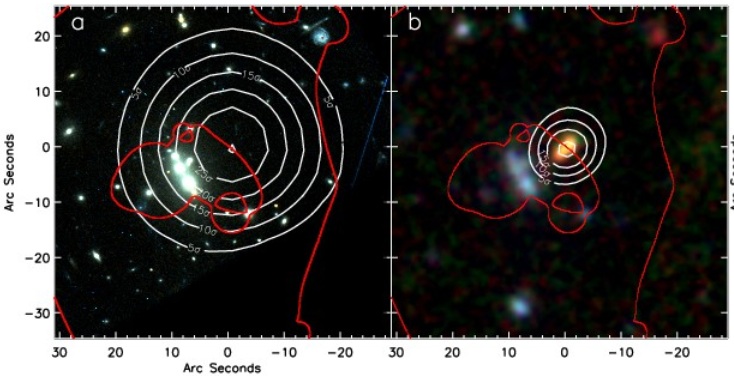
The RSR spectrum of the z=2.327 SMG "Cosmic Eyelash" (SMMJ2135-0102) is
shown on the top panel. The full 74-111 GHz spectrum is shown in the
inset. This zoomed-in view of the 6 GHz wide section nicely demonstrates
that the redshifted CO 3-2 line is fully resolved by the spectrometer.
This strongly lensed galaxy is not visible in the optical band HST
image shown on the bottom left panel, but it shows up as a bright, red
source in the Spitzer IRAC near-infrared color image shown in the bottom
right panel (from Swinbank et al. 2010).
z=2.558 QSO H1413+117 ("the Cloverleaf")
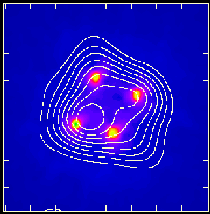
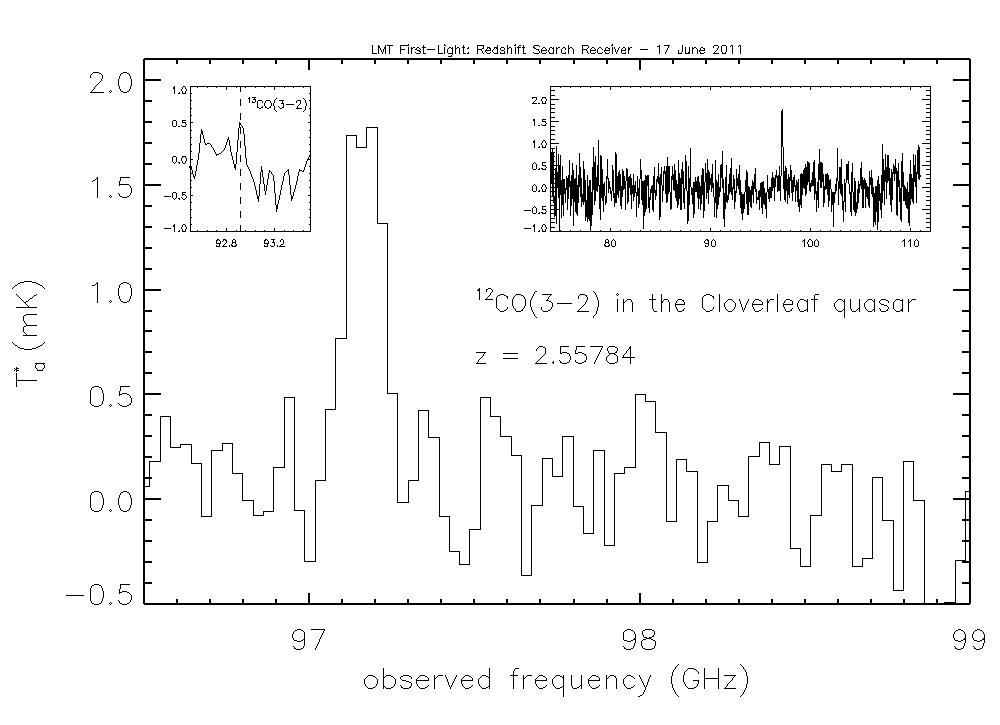
The RSR spectrum of the z=2.558 H1413+117 (Cloverleaf Quasar) is
shown on the right panel. This zoomed-in view of the redshifted CO 3-2
line shows that the line is fully resolved by the spectrometer, and the
full 74-111 GHz spectrum is shown in the inset. The left panel shows
an HST image and CO 7-6 line emission (contours) mapped using an
interferometer (Yun et al. 1997).
z=3.930 SMG MMJ18423+5938
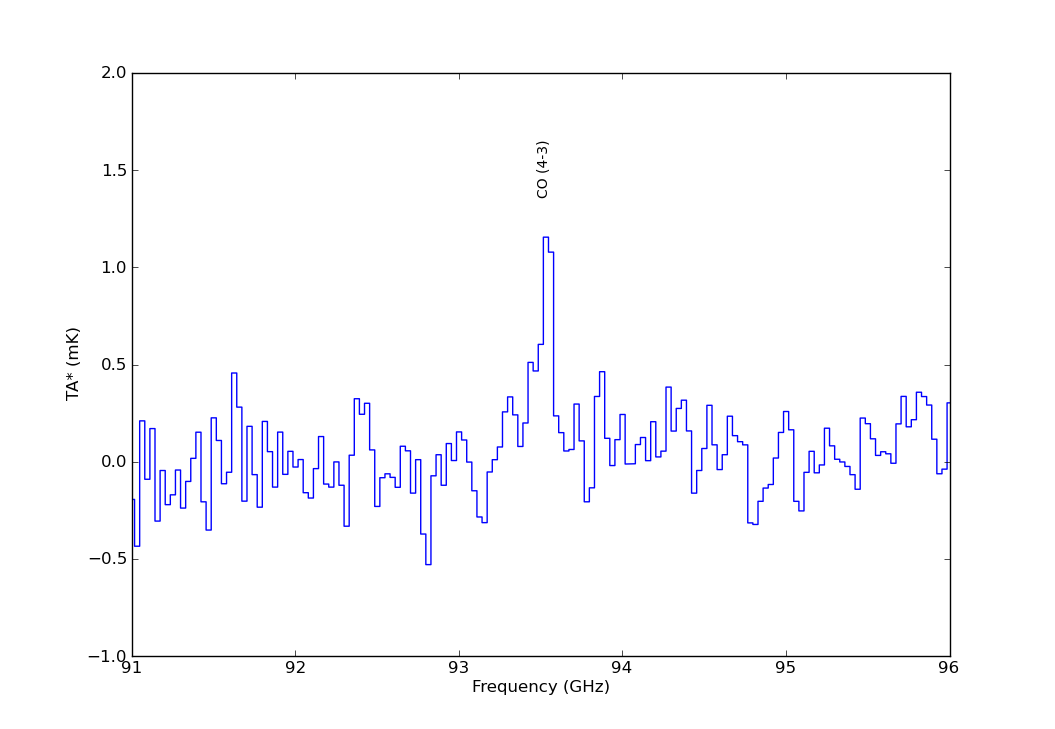
The RSR spectrum of the z=3.930 SMG MMJ18423+5938. The extremely narrow
CO 4-3 line observed is the result of only a small portion of the galaxy
being highly magnified by the foreground lens. The observed line width
agrees well with the 175 km/s reported by Lestrade et al. (2010).

